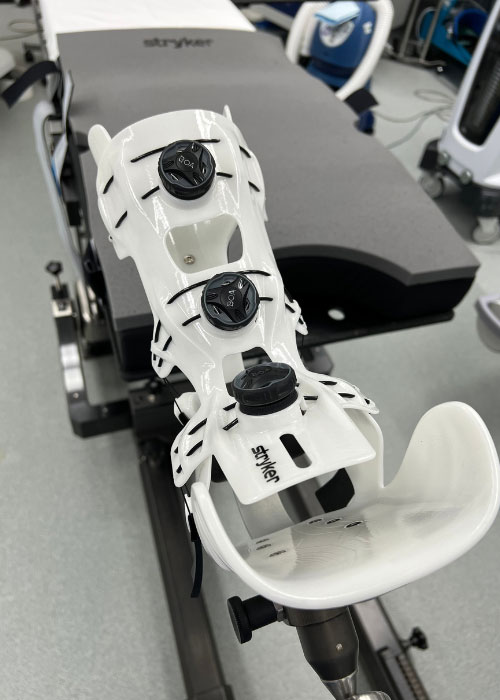What is a hip arthroscopy?
A hip arthroscopy is a routine surgical procedure commonly used in the diagnosis and treatment of various hip pathologies. A small camera (arthroscope) and specialized surgical instruments are implemented in this minimally invasive surgical technique. The arthroscope allows the surgeon to methodically examine the bones, muscles, ligaments, and tendons of the hip joint while using the surgical tools to complete the necessary revisions. Patients that undergo a hip arthroscopy can expect a decreased risk of infection and blood loss during the procedure and diminished pain and inflammation following the arthroscopic procedure. Dr. Ronak Mukesh Patel, orthopedic hip doctor, treats patients in Sugar Land, Pearland, and the Houston, Texas area who are in need of a hip arthroscopy.
Is hip arthroscopy new?
Traditionally, hip surgery employed a large incision and more invasive surgical methods to treat hip joint pathologies. Dr. Severin Nordentoft, a Denmark surgeon, first described viewing the inside of a joint with an arthroscope in 1912. Then, in 1918, Professor Kenji Takagi of Tokyo University used an arthroscope to visualize the inside of a cadaver knee and continued to modify the arthroscope throughout his career. The first successful operating arthroscope was designed by a Japanese surgeon, Dr. Masaki Watanabe, in 1958. The 1970s and 1980s saw the evolution of fiber optics allowing advancements in surgical studies and techniques. In today’s medicine, leaders like Dr. Patel make minimally invasive surgical repairs of the hip possible with excellent patient outcomes.
What is a postless hip arthroscopy?
The hip joint must remain open during a traditional hip arthroscopy to allow the safe passage of the surgical instruments into the hip joint. During the traditional arthroscopic approach, the joint is opened by pulling on the leg and a large padded post, situated in the patient’s perineal area, provides counter-traction while the leg is pulled taught. A postless hip arthroscopy uses a special table to generate the traction necessary for this procedure without the use of a perineal post.

What types of hip conditions can be repaired by a postless hip arthroscopy?
There are several acute and degenerative hip conditions that can be corrected by postless arthroscopic surgery, including, but not limited to, the following:
- Early States of Hip Arthritis
- Hip Instability
- Hip Labral Tears
- Gluteus Medius and Gluteus Minimus Tears
- Removal of Loose Bodies
- Chondral Damage
- Femoroacetabular Impingement (FAI)
- Psoas Impingement
- Trochanteric Bursitis
- Iliotibial (IT) Band and Snapping Hip Syndrome
- Pigmented Villonodular Synovitis (PVNS)
What are the advantages of a postless hip arthroscopy?
Not every hip doctor possesses the skills or knowledge to perform a postless hip arthroscopy, yet Dr. Patel has extensive training and experience with this surgical technique and prefers this surgical approach over the traditional method. Although a postless hip arthroscopy provides several benefits over the traditional arthroscopic method, Dr. Patel will review the patient’s medical history and determine if they are an ideal candidate for this refined surgical technique. Below are a few of the many benefits of a postless hip arthroscopy:
- Soft-tissue and nerve-related complications from the use of a perineal post are completely eliminated.
- Bilateral hip arthroscopies can be completed in the same surgical setting leading to a shorter recovery.
- The lack of a large perineal post allows true lateral and anteroposterior x-ray views of the hip.
- The inclined position of the special traction table improves blood return to the brain and heart. By improving this blood return, the patient can maintain a lower blood pressure during the procedure.
Complex Hip Surgeon

Hip arthroscopy is a surgical treatment method that has been used to repair hip injuries for many years. Postless hip arthroscopy uses a specialized table that allows surgeons to act without a perineal post. This type of procedure can be used to treat many hip conditions including instability, arthritis, labral tears, and many more. Complex hip surgeon Doctor Ronak Mukesh Patel has extensive training and experience performing postless hip arthroscopy for patients in Houston, Sugar Land, and Pearland, TX. Contact Dr. Patel’s team today!


